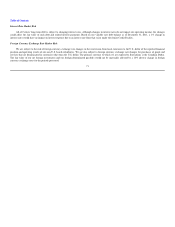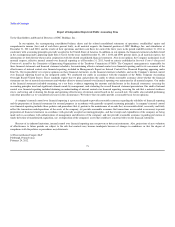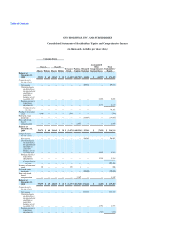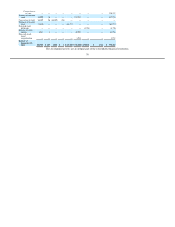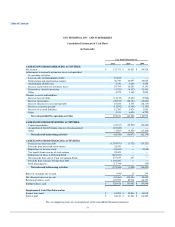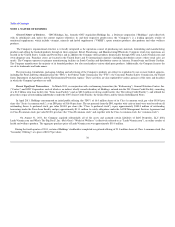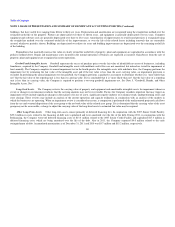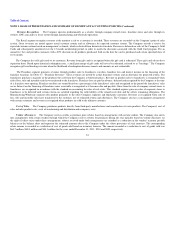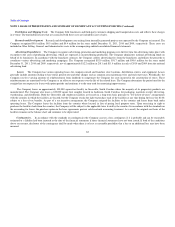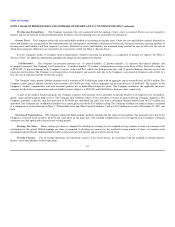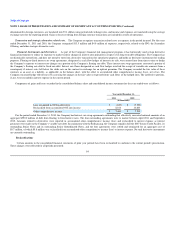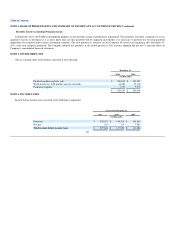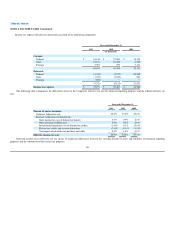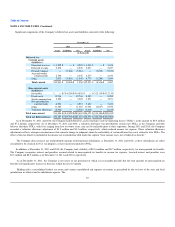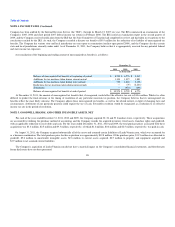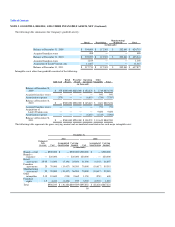GNC 2012 Annual Report Download - page 84
Download and view the complete annual report
Please find page 84 of the 2012 GNC annual report below. You can navigate through the pages in the report by either clicking on the pages listed below, or by using the keyword search tool below to find specific information within the annual report.
Table of Contents
NOTE 2. BASIS OF PRESENTATION AND SUMMARY OF SIGNIFICANT ACCOUNTING POLICIES
Basis of Presentation
The accompanying consolidated financial statements and footnotes have been prepared by the Company in accordance with accounting principles
generally accepted in the United States of America ("U.S. GAAP") and with the instructions to Form 10-K and Regulation S-X. The Company's normal
reporting period is based on a calendar year.
Summary of Significant Accounting Policies
Principles of Consolidation. The consolidated financial statements include the accounts of the Holdings and all of its subsidiaries. All material
intercompany transactions have been eliminated in consolidation.
The Company has no relationships with unconsolidated entities or financial partnerships, such as entities often referred to as structured finance or special
purpose entities, which would have been established for the purpose of facilitating off balance sheet arrangements, or other contractually narrow or limited
purposes.
Use of Estimates. The preparation of financial statements in conformity with U.S. GAAP requires management to make estimates and assumptions.
Accordingly, these estimates and assumptions affect the reported amounts of assets and liabilities and disclosure of contingent assets and liabilities at the dates
of the financial statements, and the reported amounts of revenues and expenses during the reporting periods. On a regular basis, management reviews its
estimates utilizing currently available information, changes in facts and circumstances, historical experience and reasonable assumptions. After such reviews
and if deemed appropriate, those estimates are adjusted accordingly. Actual results could differ from those estimates.
Cash and Cash Equivalents. The Company considers cash and cash equivalents to include all cash and liquid deposits and investments with an
original maturity of three months or less. The majority of payments due from banks for third-party credit and debit cards process within 24-72 hours, and are
classified as cash equivalents.
Receivables, net. The Company sells product to its franchisees and, to a lesser extent, various third-party customers. Receivables consist principally of
trade receivables of $111.5 million and $100.7 million at December 31, 2011 and 2010, respectively, and include unpaid invoices for product sales, franchisee
royalties and lease payments. The Company monitors the financial condition of the Company's franchisees and other third-party customers and establishes an
allowance for doubtful accounts for balances estimated to be uncollectible. In addition to considering the aging of receivable balances and assessing the
financial condition of the Company's franchisees, the Company considers each domestic franchisees' inventory and fixed assets, which the Company can use
as collateral in the event of a default by the franchisee. An allowance for international franchisees is calculated based on unpaid, non collateralized amounts
associated with their receivable balance. The allowance for doubtful accounts was $2.3 million and $1.6 million at December 31, 2011 and 2010, respectively.
Inventories. Inventory components consist of raw materials, finished product and packaging supplies. Inventories are stated at the lower of cost or
market on a first in/first out basis ("FIFO"). The Company regularly reviews its inventory levels in order to identify slow moving and short dated products,
expected length of time for product sell through and future expiring product and adjusts the carrying value for such inventory to estimated net realizable value.
Property, Plant and Equipment. Property, plant and equipment expenditures are recorded at cost. The remaining useful lives ranged from one year to
sixteen years across all asset classes with the exception of
79


